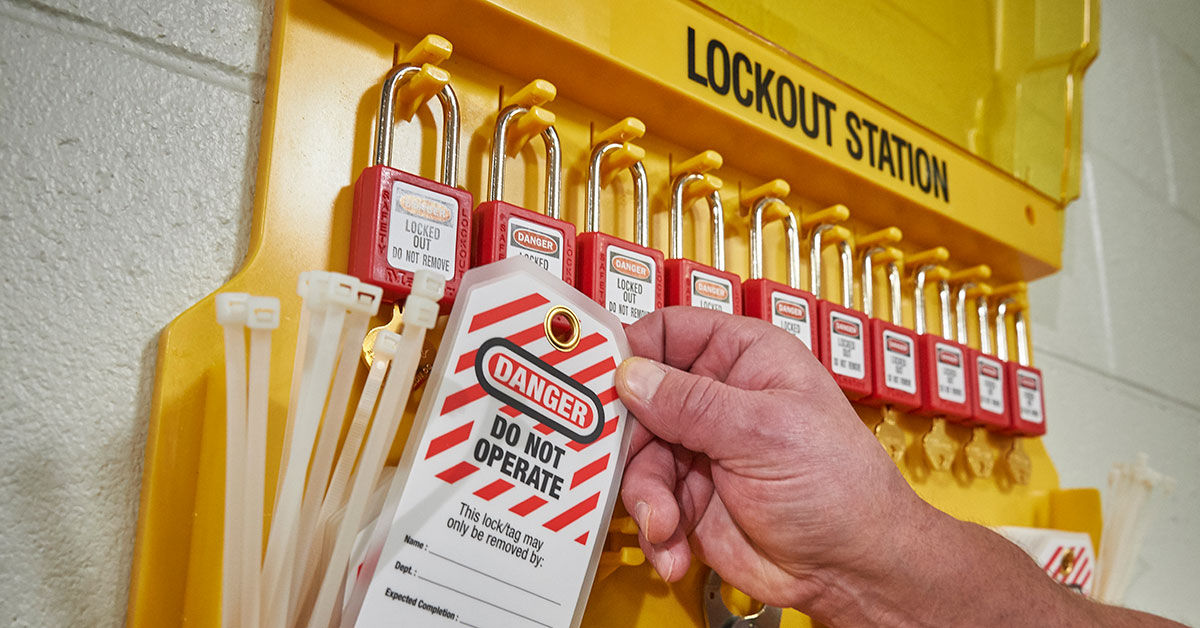Periodic inspections of energy control procedures
Date Posted: 10/27/2025

Employers must develop and document procedures to control hazardous energy whenever employees perform activities covered by the lockout/tagout (LOTO) standard at 29 CFR 1910.147. These procedures give the authorized employee written instructions on how to eliminate the potential for the unexpected activation, start up, or the release of stored energy.
At least annually, a periodic inspection must be performed by an authorized employee other than the one who is using the procedures. This individual is referred to as the inspector. The inspector must be able to determine whether:
- The steps in the procedure are being followed.
- The employees involved know their responsibilities.
- The procedure provides the necessary protection, or if changes are needed.
The employer must correct any problems identified during the periodic inspection. Problems might be the result of using a general procedure that does not handle a specific application, or from changes to equipment or processes that were not added to the procedure. (Note that if an energy control procedure is not used every year, it may be inspected each time it gets used.)
The inspector’s role
The inspector needs to observe a representative sample of authorized employees performing the servicing and maintenance using the lockout/tagout procedure. The inspector must also review each authorized employee’s responsibilities, and talk with all other authorized employees even though they may not be using the energy control procedure.
When the periodic inspection involves a tagout procedure, the inspector’s review must extend to affected employees as well, because of their role in avoiding accidental or inadvertent activation of the equipment or machinery.
The periodic inspection need not be conducted in one-on-one meetings; the inspector can meet with a group of authorized employees. Group meetings could be even more effective in communicating the need to follow the procedure carefully.
Certification and retraining
The employer must certify that a periodic inspection has been performed. The certification must include information on:
- The machine or equipment on which the energy control procedure was used.
- The date of the inspection.
- The employees included in the inspection.
- The name of the inspector.
The format and recordkeeping method for documenting these certifications is up to the employer. The format for the inspections themselves is also reasonably flexible. So long as they meet the requirements listed here, periodic inspections may be accomplished through random audits, plant safety tours, or planned visual observations.
Retraining must be conducted whenever a periodic inspection reveals, or whenever the employer has reason to believe, that there are deviations from or inadequacies in the employees' knowledge or use of the energy control procedure.
How Safety Management Suite Can Help
Lockout/Tagout (LOTO) is a critical safety procedure, yet many safety managers struggle with its complexities and compliance requirements. Our upcoming webinar, Demystifying LOTO Energy Control: Essential Strategies for Safety Managers on Thursday, October 30, at 1:00 PM CDT, will break down LOTO energy control into clear, actionable strategies designed to enhance workplace safety and regulatory compliance. The last 10-15 minutes of the event will be saved to answer your questions. Log in or create your free trial and save your seat today!
E-mail Newsletter
Sign up to receive the weekly EHS Insider email newsletter for safety articles, news headlines, regulatory alerts, industry events, webcasts, and more.